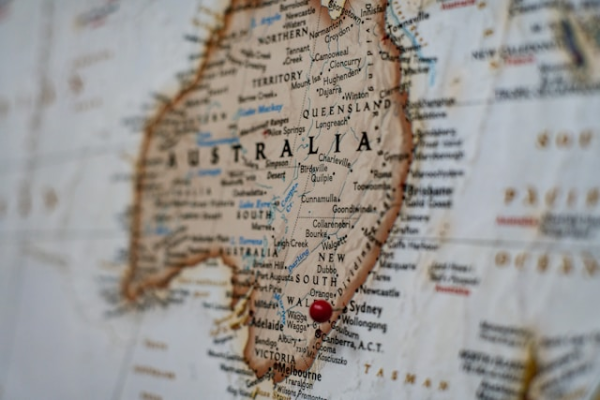The Top 3 Healthcare Systems in the World

Healthcare systems across the world vary dramatically in terms of structure, efficiency, and cost. This can make comparing different healthcare systems across the globe quite complex. The healthcare industry will function differently based on the needs of the population there, as well as the level of investment received and the level of innovation found in different countries. To help you understand which countries perform best in terms of healthcare, this article will provide a detailed look at how the three best healthcare systems in the world perform and their methods of financing.
How to Assess Different Healthcare Systems
Evaluating healthcare systems globally involves assessing various metrics that indicate efficiency, accessibility, and overall quality. These metrics help in comparing different systems and identifying areas of strength and opportunities for improvement. The research from CEO World provides a wealth of statistics that can help grade different healthcare systems around the world. Below are some of the key metrics used to assess different healthcare systems:
Medical Infrastructure and Professionals
A fundamental metric is the availability and quality of medical infrastructure and professionals. This includes assessing the number and distribution of healthcare facilities like hospitals and clinics per capita. It also encompasses the availability of skilled healthcare professionals, such as doctors, nurses, and specialists, relative to the population. High-quality training and continuing education for medical staff are also key for maintaining the standards of healthcare services. Countries with advanced medical research facilities and teaching hospitals often lead in innovation and service quality, directly impacting patient outcomes.
Medicine Availability and Cost
The accessibility and affordability of medications are strong indicators of a healthcare system’s performance. Systems that ensure the wide availability of essential medicines, including both generic and patented drugs, without exorbitant costs, stand out as more effective. The cost of medications can be influenced by government policies, such as price controls, subsidies, and the presence of a competitive market with multiple suppliers. Affordable healthcare requires that medicines are not only available but also financially accessible to all segments of the population, reducing the reliance on out-of-pocket expenditures.
Government Readiness
Government readiness reflects a country's ability to adapt to healthcare challenges, including public health emergencies, changes in disease patterns, and demographic shifts. This metric evaluates the responsiveness of healthcare policies, the robustness of health emergency preparedness, and the effectiveness of governmental support for health services. A proactive government role in healthcare can be seen in the implementation of comprehensive healthcare reforms, investment in public health initiatives, and rapid response to health crises. Government readiness is also measured by the extent of healthcare coverage, including how policies accommodate low-income families, the elderly, and people with disabilities.
What are the Top 3 Healthcare Systems in the World?
Now that we’ve covered how to effectively grade global healthcare systems, it’s time to look at the top performers. Below, we will take a look at Taiwan, South Korea and Australia - the three top healthcare systems in the world at the moment based on the above metrics.
Taiwan: Universal Coverage, Singular Success
Taiwan's healthcare system is renowned for its comprehensive coverage and accessibility. Established in 1995, the National Health Insurance (NHI) scheme is a single-payer system that covers the entire population. The system is characterised by low waiting times, high patient satisfaction, and remarkable health outcomes. Life expectancy in Taiwan is high, and infant mortality rates are among the lowest in the world. Preventative services, such as annual check-ups and cancer screenings, are widely used and encouraged, contributing to early detection and better health outcomes. The financing of Taiwan’s NHI is primarily through premiums, which are based on income and shared between employers, employees, and the government. The government subsidises premiums for low-income and other qualifying groups. This system is both efficient and equitable, allowing for extensive health coverage without the burden of excessive out-of-pocket expenses for its citizens. Administrative costs are kept low due to the single-payer nature of the system, which simplifies processing and reduces overheads.
South Korea: High Tech, High Efficiency
South Korea's healthcare model is noted for its technological integration and efficiency. The system provides universal health coverage through the National Health Insurance Service, which covers 97% of the population. South Korea has a robust network of both public and private hospitals that provide high-quality care. Technological advancements are a hallmark of this system, with innovations such as telemedicine, electronic medical records, and cutting-edge medical equipment being commonplace. This integration of technology speeds up service delivery and improves the accuracy of medical diagnosis. The South Korean healthcare system is funded through a combination of compulsory national health insurance and private health insurance. The national insurance scheme is funded by contributions from employers and employees based on a percentage of income, along with government contributions. Additional out-of-pocket costs are relatively low, which ensures that healthcare remains affordable for most residents. The system’s efficiency and the government’s regulation of hospital fees also contribute to keeping overall healthcare costs manageable.
Australia: A Blend of Public and Private Sectors
Australia boasts a hybrid healthcare system that combines public universal coverage with a vibrant private health sector. Known as Medicare, the public system provides free or subsidised health care to all Australian citizens and permanent residents. Australia’s healthcare system ranks highly in terms of quality, with excellent patient outcomes and robust healthcare infrastructure. It excels particularly in patient safety and preventive care, supported by a widespread network of public and private hospitals. Medicare, the cornerstone of Australian healthcare, is funded by the government through general taxation and a specific Medicare levy based on individual incomes. For those seeking more extensive health services, private health insurance is also available and is encouraged by government policies, including tax incentives. The combination of public and private funding allows for greater flexibility and choice in healthcare services, catering to a wider range of healthcare needs and preferences.
Achieving Excellence in Global Healthcare
Taiwan, South Korea, and Australia exemplify effective healthcare systems with their unique blends of policy, coverage, and technology. Each system offers lessons in healthcare efficiency and equity, demonstrating that substantial health outcomes are possible through varied financing methods. Whether through a single-payer system like Taiwan's, a technologically integrated model like South Korea's, or a dual public-private model like Australia's, these countries show that thoughtful investment in healthcare can yield outstanding results for a nation’s well-being. If you’re looking to work at the cutting edge of healthcare, then working as a locum in places like Australia is an excellent opportunity for professional exposure and development. At Globe Locums, we can help you find the perfect placements for your career growth. To find out more, please get in touch with us today.

Refer A Friend
Make your friends our friends and earn! Join Globes Market Leading Referral scheme today!





